Q
What is the Colour of Vios 2023 Malaysia?
The 2023 Toyota Vios offers a solid range of color options here in Malaysia, catering to all sorts of tastes. You’ve got your timeless classics like Super White, which never goes out of style, and Silver Metallic for that sleek, modern vibe. If you’re after something a bit more understated and sophisticated, Gray Metallic fits the bill nicely, while Red Mica Metallic is there for those who want to make a bolder statement. Just a heads-up though – exact color availability might vary slightly depending on the trim level or any ongoing promotions, so your best bet is to hit up Toyota Malaysia’s official website or swing by your nearest authorized dealership to get the latest scoop.
When picking your Vios’ color, sure, personal style is key – you’ve gotta love the way it looks! But practicality shouldn’t be ignored either, especially with our weather. Lighter shades like white or silver are total lifesavers in the tropical heat; they stay cooler inside and are way easier to keep looking clean, hiding dust and minor dirt better than darker hues. On the flip side, darker colors like that Gray Metallic do give off a more premium, steady air, and they’re pretty good at masking those tiny scratches you might pick up day-to-day.
And hey, let’s not forget about our Malaysian climate – hot, humid, and those sudden downpours. It’s definitely worth investing a bit in regular paint care, like a good wax or even a ceramic coating. That’ll help protect your Vios’ finish, keep that color shining bright, and make sure it looks sharp for years to come.
Special Disclaimer: This content is published by users and does not represent the views or position of PCauto.
Related Q&A
Q
How to start 2023 Toyota with key?
To start a 2023 Toyota model with a traditional key ignition, first make sure the vehicle is in Park (P), then insert the key into the ignition switch. Press and hold the brake pedal, turn the key clockwise to the "Start" position, and release once the engine fires up. If your Toyota has a smart key but requires a mechanical start, insert the key into the backup slot first before following the same steps.
It’s worth noting that many 2023 Toyotas come with the Smart Key system – super convenient! Just have the key fob on you when you get in, press the brake pedal, and push the "Start Button" – no need to fumble with inserting a key.
For our Malaysian drivers, a quick tip: keep an eye on your key fob battery level. A dead battery can leave you stranded, so swap it out proactively. Also, take a minute to check your owner’s manual for emergency start procedures – some models let you hold the dead fob right against the start button to trigger a touching start.
Malaysia’s hot and humid weather can be tough on key fob electronics too. Try not to leave your keys baking in direct sunlight or in damp spots for ages. If you run into starting issues, start simple: replace the battery first. If that doesn’t fix it, swing by your nearest authorized Toyota service center to get it checked out.
Q
How to lock Vios 2023?
To lock your 2023 Toyota Vios, start with the basics: hit the lock button on your key fob once. That’ll seal all the doors, arm the alarm system, and you’ll get a little beep or see the lights flash to let you know it worked. If you’ve got the smart key system, just walk up to the door with the key in your pocket or bag and touch the sensor area on the door handle – it’ll lock right up. Some models even let you lock it remotely using the Toyota app, but you’ll need to set up your car in the app first and make sure you’ve got a data connection.
One handy thing about modern cars like the Vios is the auto-relock feature. If you unlock it but don’t open any doors, it’ll automatically lock itself again after 30 seconds to a minute – saves you from that "did I lock it?" panic. Pro tip: keep an eye on your key fob battery. A dead battery means no remote locking, so swap it out when it starts to get flaky. Also, watch out for areas with strong signal interference – sometimes that can mess with the remote. If all else fails, there’s the good old mechanical key hidden in the fob. Pop that out and manually lock the driver’s door – it’s a backup for when the electronics decide to take a day off.
Q
What is the most popular car color in the world in 2023?
Let's dive into 2023's global car color trends. White remains the undisputed champion worldwide, grabbing roughly 35% of the market. Why do people love it? Simple – it hides dirt well, gives the car a sleek, premium look, and in hot spots like Malaysia, it's a lifesaver by reflecting sunlight to keep interiors cooler. Right behind are black and gray, clocking in at around 20% and 18% respectively. These neutral tones are total classics, pairing effortlessly with any style, which is why shoppers keep coming back to them.
Over in Malaysia, white's also the top pick, and it makes total sense for that hot, rainy climate. Silver and blue have their fans too, though. Silver's another smart, low-maintenance choice that also adds a nice techy vibe, while blue is steadily gaining ground, especially with younger drivers looking to stand out a bit.
Picking a car color isn't just about looks – there's real practicality involved. Dark colors, for example, soak up way more heat under the sun, while lighter shades can actually be safer at night by being more visible. And let's not forget resale value: neutrals like white, black, and gray almost always hold their worth better come trade-in time.
It's cool to see more automakers rolling out special edition colors or custom paint options lately, letting folks really personalize their rides. But when it comes down to it, if you want something that's both safe, sensible, and always in style, white's still the go-to for most drivers in 2023.
Q
How to start Vios 2023?
To start the 2023 Toyota Vios, first make sure the vehicle is in Park (P) or Neutral (N). Then, press down on the brake pedal and hit the start button to fire up the engine. If your Vios has the traditional key ignition, just insert the key into the ignition switch and turn it clockwise to the start position. Once it's running, it's a good idea to let the engine warm up for a bit, especially when it's cold. This helps protect the engine and actually improves fuel efficiency too.
The 2023 Vios comes with a smart key system, which is super handy – as long as the key's inside the car, you can start it up without having to insert anything. Another cool feature is Toyota's smart stop-start tech. It automatically shuts off the engine when you're idling, like at a traffic light, to save fuel. Just tap the gas pedal gently and it fires right back up.
For our Malaysian drivers, we all know how hot it can get in those tropical temps. So once you start the car, I recommend switching the AC to fresh air mode first to let the hot air out, then switch to recirculate to cool things down quickly.
In your day-to-day, keeping an eye on the battery charge and fluid levels is key to avoiding start-up issues. If you ever have trouble starting the car, it might be a weak battery or a fuel system problem. When that happens, it's best to hit up your authorized Toyota service center to get it checked out.
Q
How much is the new Vios 2023 in Malaysia?
The 2023 Toyota Vios comes with varying price tags in Malaysia, depending on the trim. The base 1.5J MT starts at around RM89,600, while the top-spec 1.5G CVT is priced at approximately RM95,500. Keep in mind, these figures might shift slightly based on dealer promotions or any extra add-ons you might opt for.
Under the hood, you'll find a 1.5-liter Dual VVT-i engine churning out 107 horsepower and 140 Nm of torque, paired with a 7-speed CVT gearbox. It's a solid performer when it comes to fuel efficiency, making it a great fit for everyday city driving.
The Vios has long been a staple in Malaysia's B-segment sedan scene, and for good reason—its reputation for reliability, low maintenance costs, and a decent suite of safety features (like VSC as standard across all trims) precedes it. The 2023 model steps things up with updated LED headlights and a more modern interior design, which is a nice touch.
In the local market, the Vios goes head-to-head with the Honda City and Nissan Almera. If you're in the market, it’s worth comparing things like warranty coverage, after-sales service networks, and flexible financing options each brand offers. And of course, nothing beats heading to an authorized dealership for a test drive to get a real feel for how it handles on the road.
Q
How much horsepower does a 2021 Toyota Vios have?
The 2021 Toyota Vios in Malaysia comes with a 1.5-liter four-cylinder naturally aspirated engine (code 2NR-FE) that puts out 107 horsepower and 140 Nm of torque. With Dual VVT-i technology, this engine delivers power that's perfectly suited for city commuting and everyday drives. This front-wheel-drive compact sedan pairs that engine with either a Super CVT-i continuously variable transmission or a 5-speed manual gearbox, depending on the variant, and it's known for excellent fuel efficiency.
Quick note: Horsepower is the unit that measures an engine's power output – generally, the higher the number, the better the acceleration and top speed potential. But real-world driving feel also hinges on factors like torque delivery, vehicle weight, and transmission tuning. As a popular model in Southeast Asia, the Vios prioritizes a balance of reliability and fuel economy with its powertrain setup. If you're chasing more performance, the GR lineup might be more your speed – just remember, Malaysia's road conditions and traffic laws do cap how fast you can actually go anyway.
Q
How many km per liter is the 2021 Toyota Vios?
The real-world fuel efficiency of the 2021 Toyota Vios in Malaysia can vary depending on the trim level and driving conditions. Official figures for the 1.5L Dual VVT-i engine paired with the CVT gearbox suggest a combined fuel consumption of around 15 to 17 kilometers per liter. If you're mostly doing highway cruising, you might even squeeze out over 18 km/L – thanks in part to Toyota's refined powertrain and that handy Eco driving mode.
But here's the thing about fuel economy: it's influenced by a bunch of factors. Your driving style plays a big role – jackrabbit starts and heavy acceleration will definitely guzzle more fuel. Then there's the road conditions; city driving with all that stop-start traffic usually bumps up consumption by about 20% compared to smooth highway runs. How often you blast the air conditioning matters too, and let's not forget vehicle maintenance – keeping your air filter clean and spark plugs fresh goes a long way in maintaining optimal fuel efficiency.
Malaysian owners looking for more real-world numbers can check out local platforms like MyTukar or Carlist for user-reported data. A quick tip: expect the fuel economy to settle down a bit after the initial break-in period with a new car. If you suddenly notice your Vios drinking more petrol than usual, it might be worth checking if your tire pressure is low or if the engine oil is due for a change.
Over in the same segment, the Honda City's EarthDream engine tech also delivers comparable fuel sipping abilities. Ultimately, the choice might come down to which brand's after-sales network you prefer or just personal taste.
Q
What generation is the Toyota Vios 2021?
The 2021 Toyota Vios belongs to the third-generation model (codenamed XP150). First introduced back in 2013, this generation has seen several minor updates over the years. For the Malaysian market, the 2021 iteration largely carries forward the design language from the 2019 facelift. Under the hood, you'll find the 1.5L Dual VVT-i engine paired with a CVT transmission, available in three trim levels: G, E, and J.
The third-gen Vios has been a big hit in Southeast Asia, and it's easy to see why. It's known for being fuel-efficient, reliable, and cheap to maintain – traits that make it a perfect fit for Malaysian roads and consumer preferences. What's really worth noting is how localized the Vios is for Malaysia. Some variants are even assembled locally, giving it a significant edge in terms of value for money. Safety has also been stepped up this generation, with features like VSC (Vehicle Stability Control) coming as standard across the range, and up to 7 airbags on higher-spec models – all of which boosts its appeal in the market.
For Malaysian buyers, the Vios has long been a top pick in the B-segment sedan category. It's not just Toyota's reputation for dependability that draws people in; its strong resale value and relatively low long-term running costs are big selling points too.
Q
How much is a Toyota Vios 2021?
The 2021 Toyota Vios comes with a range of prices in Malaysia depending on the trim and specs, typically starting around RM 77,200 and going up to RM 87,300. Keep in mind, though, these numbers can shift a bit based on where you are, any dealer promotions going on, or extra services you might add on.
As one of Toyota’s main players in Malaysia, the Vios sticks with what works: a 1.5-liter naturally aspirated engine paired with a CVT transmission. It’s a solid balance of fuel efficiency and everyday usability—perfect for zipping around town or longer drives. Even the base model doesn’t skimp on the essentials: you’ll get LED headlights, a 7-inch touchscreen, and a reverse camera. Step up to the higher trims, and you might score upgrades like smart keyless entry or power-adjustable seats.
What really makes the Vios a hit in Southeast Asia, though, is its reputation for durability and low maintenance costs. Plus, it holds its value pretty well on the used market, which is a big win if you’re a budget-conscious family or a first-time buyer. Speaking of used options, a 2021 Vios typically goes for between RM 60,000 and RM 75,000 these days, but that depends on how it’s been driven, mileage, and any remaining warranty.
If you’re in the market, my advice? Shop around at different dealers to compare quotes, and keep an eye on Toyota Malaysia’s official site for promos. Sometimes they’ll throw in free service packages or low-interest financing deals—definitely worth checking out to get the best bang for your buck.
Q
How many liters of coolant for Toyota Vios 2019?
For the 2019 Toyota Vios, the coolant capacity typically comes in around 5.5 to 6 liters. The exact amount might vary slightly depending on the specific trim level or cooling system design, so it's always smart to check your owner's manual or hit up a Toyota authorized service center for the precise specs. Coolant's the lifeblood that keeps your engine running at the right temp, so regularly checking the level and making sure you're using Toyota-spec coolant—usually that red or pink long-life type—is super important. Mixing different colored or types of coolants is a big no-no; it can cause chemical reactions that lead to clogs or even corrosion in the cooling system. Here in Malaysia's hot climate, coolant works extra hard, so we recommend changing it every 2 years or 40,000 kilometers, whichever comes first. If you notice the coolant changing color or the level dropping frequently, don't wait—get it checked out right away for leaks or other system issues. And while you're doing your regular maintenance, take a quick peek at the coolant reservoir too. Just make sure the level sits between the minimum and maximum marks, and your engine will thank you by staying in top working shape.
Latest Q&A
Q
What is the CC of Honda City 2020?
The 2020 Honda City hits the Malaysian market with two engine choices: a 1.5-liter SOHC i-VTEC naturally aspirated petrol engine and a 1.5-liter DOHC i-VTEC hybrid system. Let's break down the specs. The petrol unit displaces 1497cc, cranking out 121 horsepower and 145 Nm of torque. On the hybrid side, it pairs that same 1.5-liter engine with an electric motor, resulting in a combined 109 horsepower – this one's all about fuel sipping efficiency.
Now, CC (cubic centimeters) is the measure of engine displacement, and it directly impacts how a car performs and drinks fuel. Typically, a bigger displacement means more power, but it can also mean higher fuel bills. The City's 1.5-liter sweet spot is a big reason it's so popular in Malaysia – it strikes that perfect balance between pep and fuel economy, handling both city commutes and longer drives like a champ.
But the 2020 City isn't just about the engine bay. It also comes loaded with Honda Sensing safety tech and a modern, fresh interior design, which really ups its game in the market. For Malaysian buyers, this car ticks all the boxes: practical, easy on the wallet at the pump, and packed with the latest tech. It's a solid all-rounder.
Q
How much does a Honda 2020 cost?
Prices for the 2020 Honda models in Malaysia vary quite a bit depending on the specific model and how it's kitted out. Take the Honda City, for example – you're looking at roughly RM70,000 to RM90,000. The Civic sits a bit higher, usually ranging from around RM110,000 up to RM140,000, while the CR-V typically falls between RM140,000 and RM170,000. exact figures hinge on the trim level, engine specs, and any extra add-ons you might go for.
When buying a new car in Malaysia, it's not just the sticker price you need to factor in. There's registration fees, insurance, road tax – all that extra stuff adds up and affects the final on-the-road cost.
Over in the used car market, 2020 Honda models will fluctuate in price too, based on mileage, condition, and remaining warranty. You can generally pick one up for 20% to 40% less than a brand-new equivalent.
If you're in the market, I'd definitely recommend shopping around different dealers to compare quotes. It's also worth checking out any ongoing Honda promotions or financing deals – those can really help you save some cash.
Hondas have a solid rep in Malaysia for being reliable and fuel-efficient, especially popular models like the City and Civic. They're pretty affordable to own long-term, and getting them serviced or repaired is relatively straightforward.
Q
What is the top speed of Honda City 2020?
The 2020 Honda City maxes out at around 190 km/h, which is the top speed you can squeeze out of its 1.5-liter i-VTEC naturally aspirated engine under ideal conditions. Of course, in the real world, you might see a slight difference depending on road conditions, how much you're carrying, or the weather. This car is pretty popular in the Malaysian market, and it's not just because of its solid performance—it's also about that fuel efficiency and nimble handling that makes city driving a breeze. The CVT gearbox in the City does a good job smoothing out power delivery, so acceleration feels seamless and efficient, whether you're commuting daily or hitting the highway for a longer drive. For Malaysian buyers, beyond just top speed, overall performance and maintenance costs matter a lot, and the City delivers here too. Its low trouble rate and wide service network make life easier for owners. If you're craving a bit more zip, there's always the Honda City RS variant. It gets some tweaks to the engine tuning and sportier bits, but don't expect a huge jump in top speed—these cars are all about balancing practicality with a bit of driving fun, after all.
Q
How safe is the Honda City 2020?
The 2020 Honda City holds its own when it comes to safety, packing in 6 airbags, Vehicle Stability Assist (VSA), Anti-lock Braking System (ABS), and Electronic Brake-force Distribution (EBD). That's a pretty solid setup for the class, and it should do a good job of keeping you protected during those daily drives around Malaysia. Honda's ACE Body Structure is also on board here, which is designed to effectively disperse crash energy and boost occupant safety in the event of a collision. It's worth highlighting that the 2020 City scored a 5-star rating in ASEAN NCAP crash tests, which is a solid stamp of approval for its safety credentials. For Malaysian buyers, picking this car means you're not just getting Honda's usual reputation for reliability, but also a decent level of safety kit. If safety is a top priority for you, it's definitely worth checking out the specific safety features when you're looking to buy – things like whether it comes with Honda Sensing. That suite includes handy advanced features like Adaptive Cruise Control and Lane Keeping Assist, which can go a long way in making your drives even safer.
Q
What is the fuel economy of the Honda City 2020?
The 2020 Honda City demonstrates excellent fuel efficiency in the Malaysian market. The variant equipped with the 1.5L i-VTEC petrol engine and CVT transmission has an official combined fuel consumption of 5.4 L/100km (approximately 18.5 km/L). The hybrid e:HEV variant is designed for even higher efficiency, though its specific fuel consumption figure should be verified with official sources or latest reviews, as the widely cited 3.4 L/100km (approximately 29.4 km/L) lacks direct support in the provided search results and may not reflect real-world conditions in Malaysia. Both powertrains closely align with the demands of Malaysian consumers who prioritize fuel economy. Actual fuel consumption may vary depending on factors such as driving habits, road conditions, and vehicle load. Therefore, adhering to a regular maintenance schedule is crucial for maintaining optimal fuel efficiency.
Given Malaysia's hot and humid climate, judicious use of the air conditioning system and maintaining the recommended tire pressure can contribute significantly to improving fuel economy. As a top-selling model in the B-segment sedan market in Malaysia, the Honda City's fuel efficiency remains competitive against its peers, making it a practical choice for daily commuting and family use. The e:HEV hybrid version, in particular, presents a compelling option for environmentally conscious drivers seeking to minimize long-term running costs, pending verification of its specific fuel economy claims.
View MoreRelated News
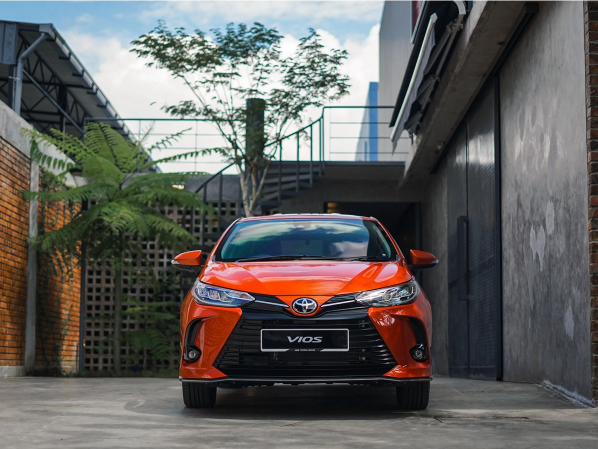
Toyota Vios Interior Design Revealed: A Balance of Functionality and Aesthetics
LienJul 18, 2025
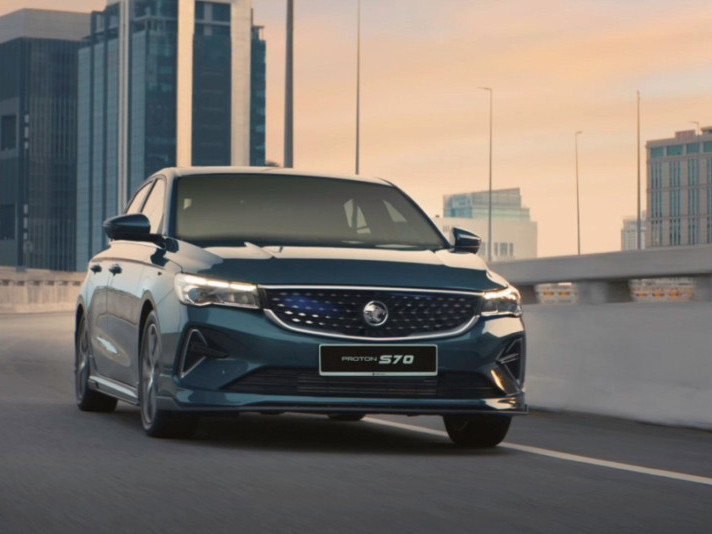
Proton S70 vs Honda City: The New Segment Leader?
LienJun 5, 2025
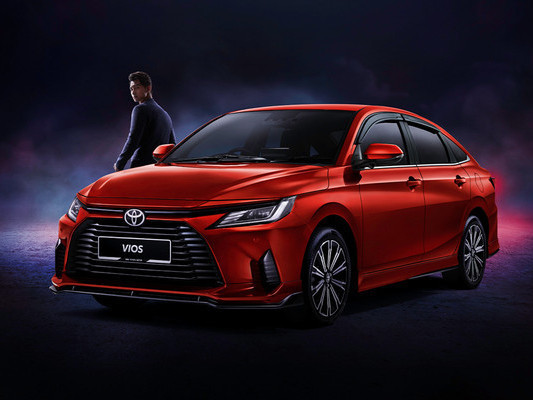
Toyota Vios : An In-Depth Buying Guide
LienMar 25, 2025
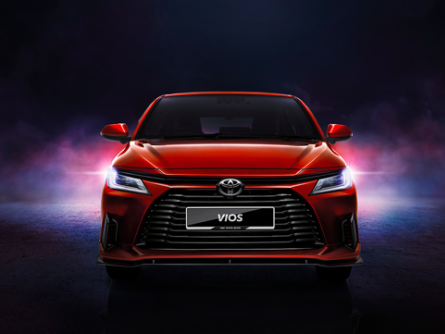
Toyota Vios: Selling price starts from RM 89,600, is it a Mini Camry?
LienMay 28, 2024

Toyota Land Cruiser FJ did not disappoint, the most anticipated civilian off-road vehicle is back.
Kevin WongOct 21, 2025
View More










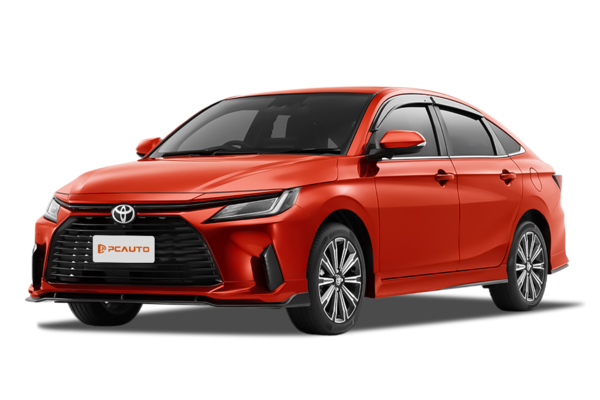





Pros
Cons